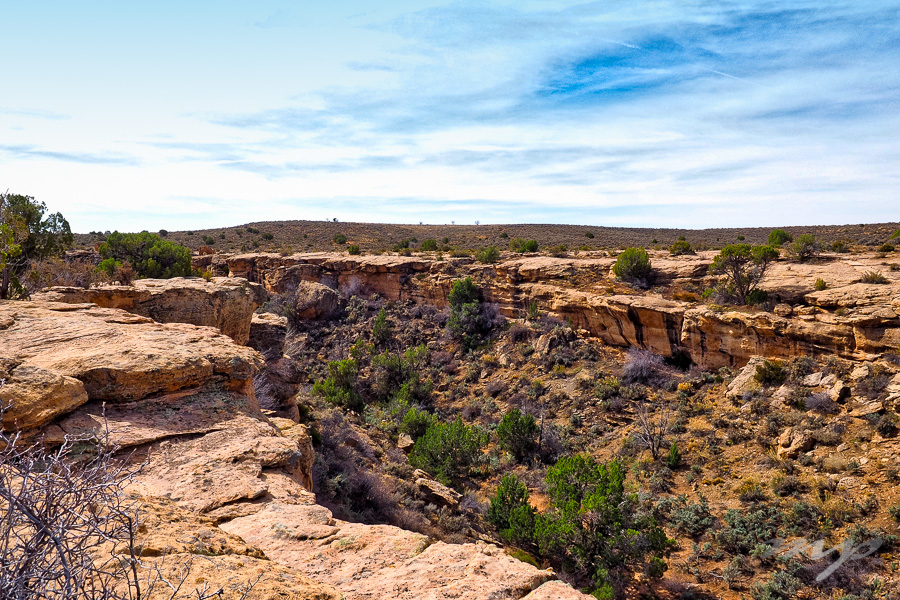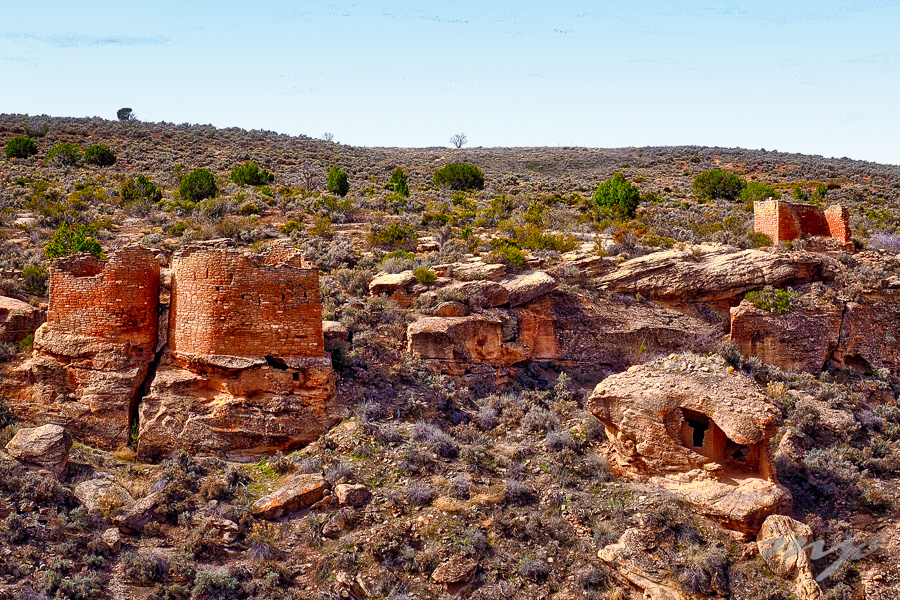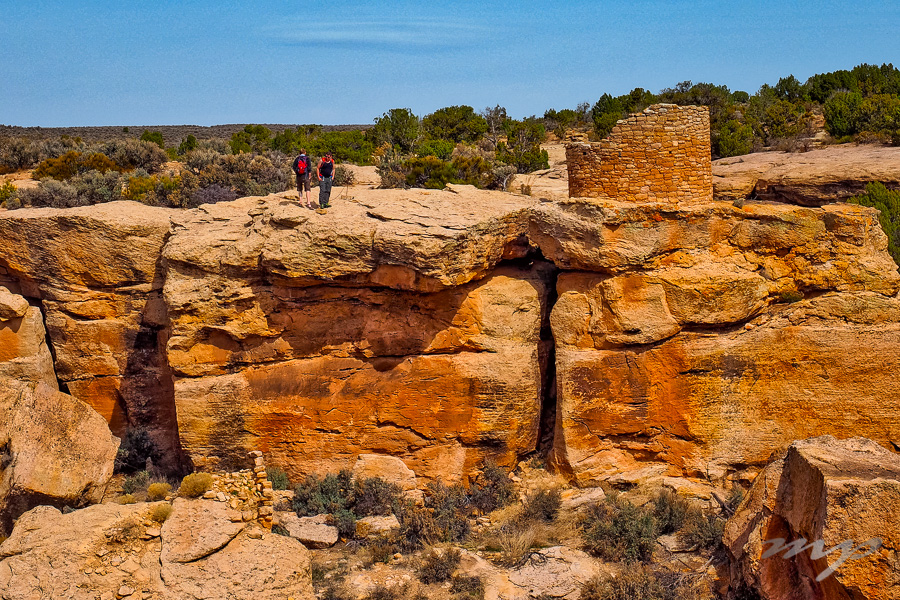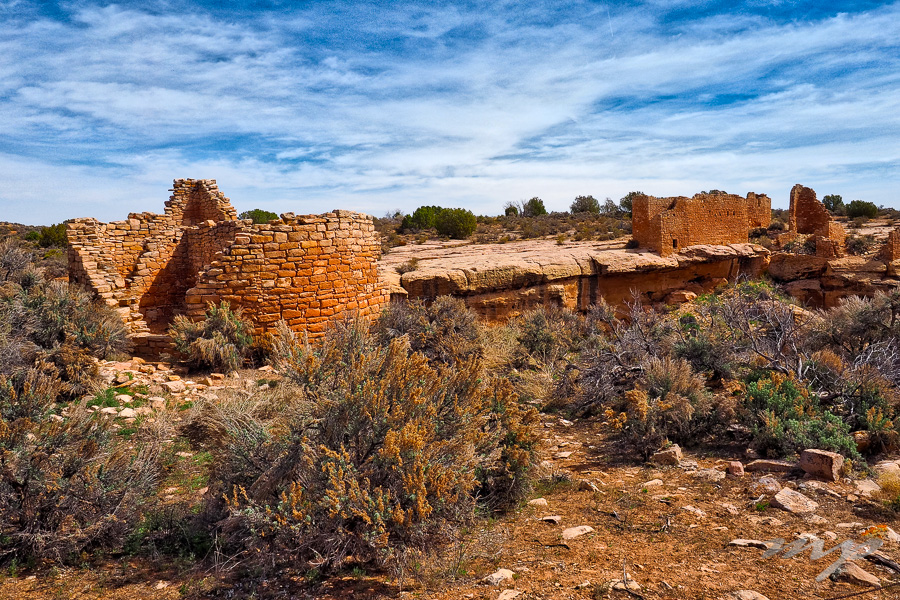
“Hovenweep National Monument is located on land in southwestern Colorado and southeastern Utah, between Cortez, Colorado and Blanding, Utah on the Cajon Mesa of the Great Sage Plain. Shallow tributaries run through the wide and deep canyons into the San Juan River.
Although Hovenweep National Monument is largely known for the six groups of Ancestral Puebloan villages, there is evidence of occupation by hunter-gatherers from 8,000 to 6,000 B.C. until about AD 200. Later, a succession of early puebloan cultures settled in the area and remained until the 14th century.” ~~ Wikipedia, Hovenweep National Monument

An easy drive from Monument Valley, Utah, through the canyon and mesa country north of the San Juan River takes you into an area when the ancestors of today’s Pueblo Indian Tribes lived. Round, square and D-shaped towers located along the canyon head mark once thriving communities.

At the Hovenweep National Monument we hiked, along with Maggie, a two mile circular rim trail which took us around Little Ruin Canyon and its early puebloan ruins. The trail was easy to follow but was uneven and fairly steep at one end where it dropped down to the canyon bottom and then climbed back up the other canyon wall.

Most of these buildings were constructed from 1230 to 1275 ce (Common Era), about the same time as the famous cliff dwellings at Mesa Verde.

It was an interesting and educational visit. The techniques used to build these structures seemed advanced for the times and are in amazing shape for their age.

Note: Hovenweep is a Ute word meaning “deserted valley.” It refers to a series of small river valleys that feed into lower McElmo Creek and the San Juan River from Cajon Mesa on the Utah-Colorado border.

That whole area is a beautiful place with a spiritual aspect. I’ve not explored it to the extent you three are but I think I better. It’s not that far away for me. Love that last image!
The area is beautiful I can only imagine what it might have been like when the area held thriving communities such as Hovenweep. I’m not sure what route you take when visiting your folks but it might only a short side trip during one of those visits, Monte.
Yes, there are a number of these places to visit. Two of my favorites (aside from Mesa Verde) are near Flagstaff, AZ. One (Walnut Canyon) is just off I-40 to the east of Flagstaff and the other (Wupatki) is off US-89 to the north. I also like Montezuma’s Castle (near Sedona). It’s fascinating, I think, to see that many of these sites have some common characteristics. Like the availability of food and water, small areas for growing crops, and some kind of natural defensive position.
But I think the reason that they appear to be in good shape is that most have been rebuilt within the last 100 years or so. Even Mesa Verde was not in great shape until it was put back together before becoming a national park. A lot of these structures were little more than piles of rock when rediscovered. Aside from the foundations and one or two layers of sandstone bricks, not much remained. I think it’s kind of like the famous “Lincoln’s Cabin” exhibit in Washington. It’s not exactly what you’d call an “original”.
I’m not surprised many structures such as these are reconstructed to a certain extent — even as part of the investigative process. However, according to the national monument pamphlet for Hovenweep… “the unique stone towers and other buildings at Hovenweep National Monument are original and extremely fragile.” I read this to mean what we saw and photographed were as they were discovered, for the most part. Hence my amazement of their current condition. While there is no mention of any reconstruction efforts, I guess they could still have been “enhanced.” :-)
I hope in future visits to see some the other places you mentioned. Thanks, Paul!